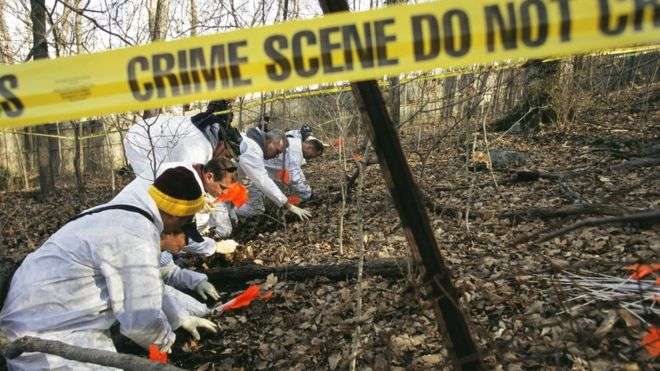That's according to a scientific study published in Nature Communications.
Analysing post-mortem samples, an international team of scientists showed that some genes became more active after death.
As well as providing an important dataset for other scientists, they also hope that this can be developed into a forensic tool.
Inside the cells of our bodies, life plays out under the powerful influence of our genes; their outputs controlled by a range of internal and external triggers.
Understanding gene activity provides a perfect insight into what an individual cell, tissue or organ is doing, in health and in disease.
Genes are locked away in the DNA present in our cells and when these are switched on, a tell-tale molecule called an RNA transcript is made.
Some of the RNA directly controls processes that go on in the cell, but most of the RNA becomes the blueprint for proteins.
It's the RNA transcripts that scientists often measure when they want to know what's going on in our cells, and we call this analysis transcriptomics.
Inner workings
But obtaining samples for study isn't an easy thing.
Blood is relatively easy to get, but lopping off an arm or sticking a needle into a living person's heart or liver is no trivial undertaking.
So, scientists rely on a relatively abundant source of samples - tissues and organs removed after death.
Whilst studies of post-mortem samples can provide important insights into the body's inner workings, it isn't clear if these samples truly represent what goes on during life.
The other confounding factor is that samples are rarely taken immediately after death, instead a body is stored until post-mortem examination and sampling can take place and its impact is unclear.
And it's this reliance on stored post-mortem samples that concerned Prof Roderic Guigó, a computational biologist based at the Barcelona Institute for Science and Technology and his team.
"You would expect that with the death of the individual, there would be a decay in the activity of the genes," he explained.
And this decay might affect proper interpretation of transcriptomics data.
Post-death throes
To see if this was the case the team used next generation mRNA sequencing on post-mortem specimens collected within 24 hours of death and on a subset of blood samples collected from some of the patients before death and, as Prof Guigó explained, what they discovered was surprising:
"There is a reaction by the cells to the death of the individual. We see some pathways, some genes, that are activated and this means that sometime after death there is still some activity at the level of transcription," he said.
Although the exact reason the genes remained active was unclear, Prof Guigó does have one possible explanation: "I would guess that one of the major changes is due to the cessation of flow of blood, therefore I would say probably the main environmental change is hypoxia, the lack of oxygen, but I don't have the proof for this."
What the study did provide was a set of predictions of post-death RNA level changes for a variety of commonly studied tissues against which future transcriptomic analyses could be calibrated.
And the understanding of the changes in RNA levels that occur after death might also be pivotal in future criminal investigations.
"We conclude there is a signature or a fingerprint in the pattern of gene expression after death that could eventually be used in forensic science, but we don't pretend we have now a method that can be used in the field," said Prof Guigó.
Whilst the data was consistent across different cadavers, and accurate predictions of time since death could be estimated from the RNA levels, Prof Guigó explained that extra work would be needed before its application in forensics could become a reality:
"It requires further investigation, longer post-mortem intervals, not only 24 hours, the age of the individual, the cause of death - all of these will need to be taken into account if we are to convert this into a useful tool."
More about: gene
















































